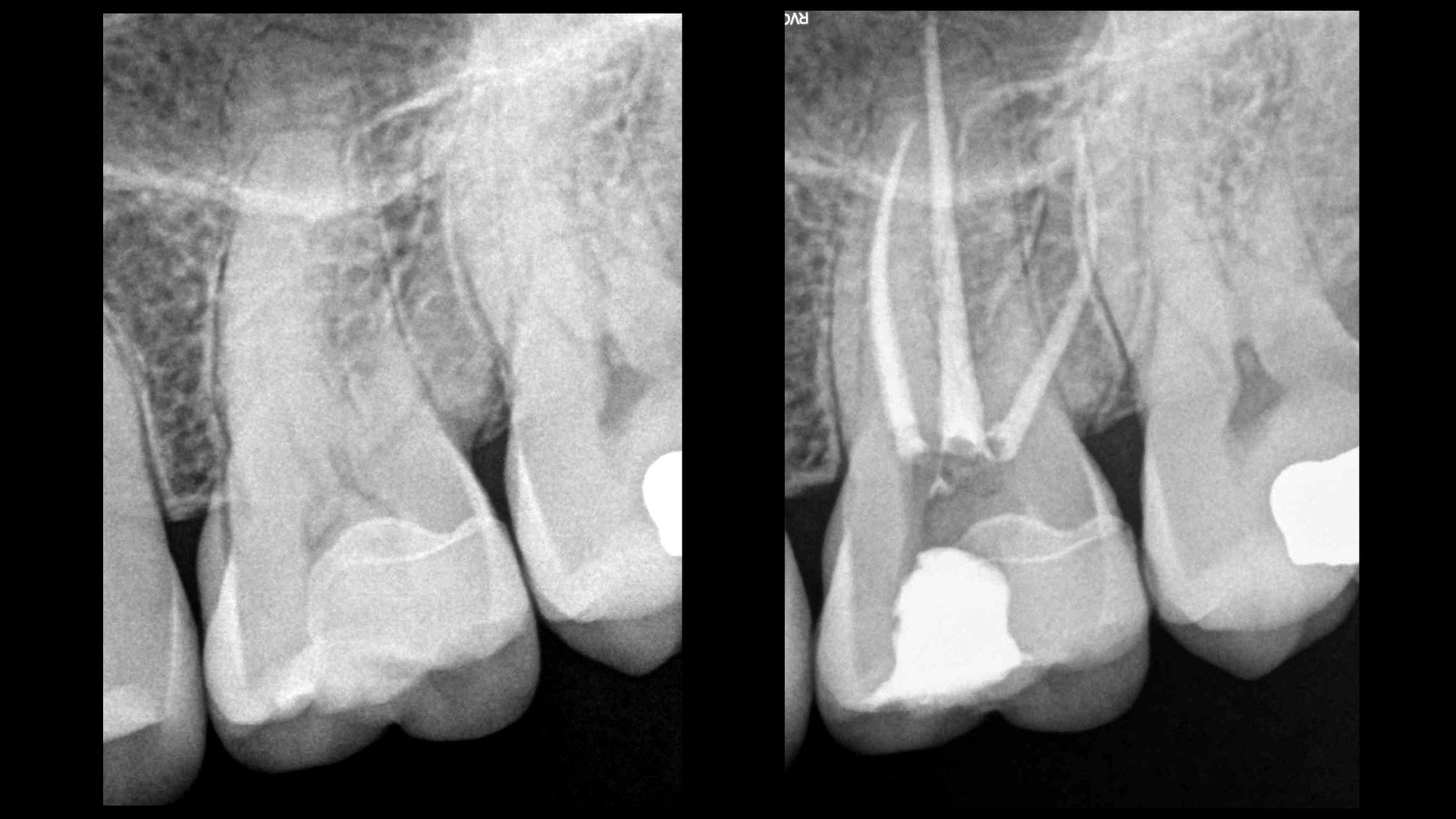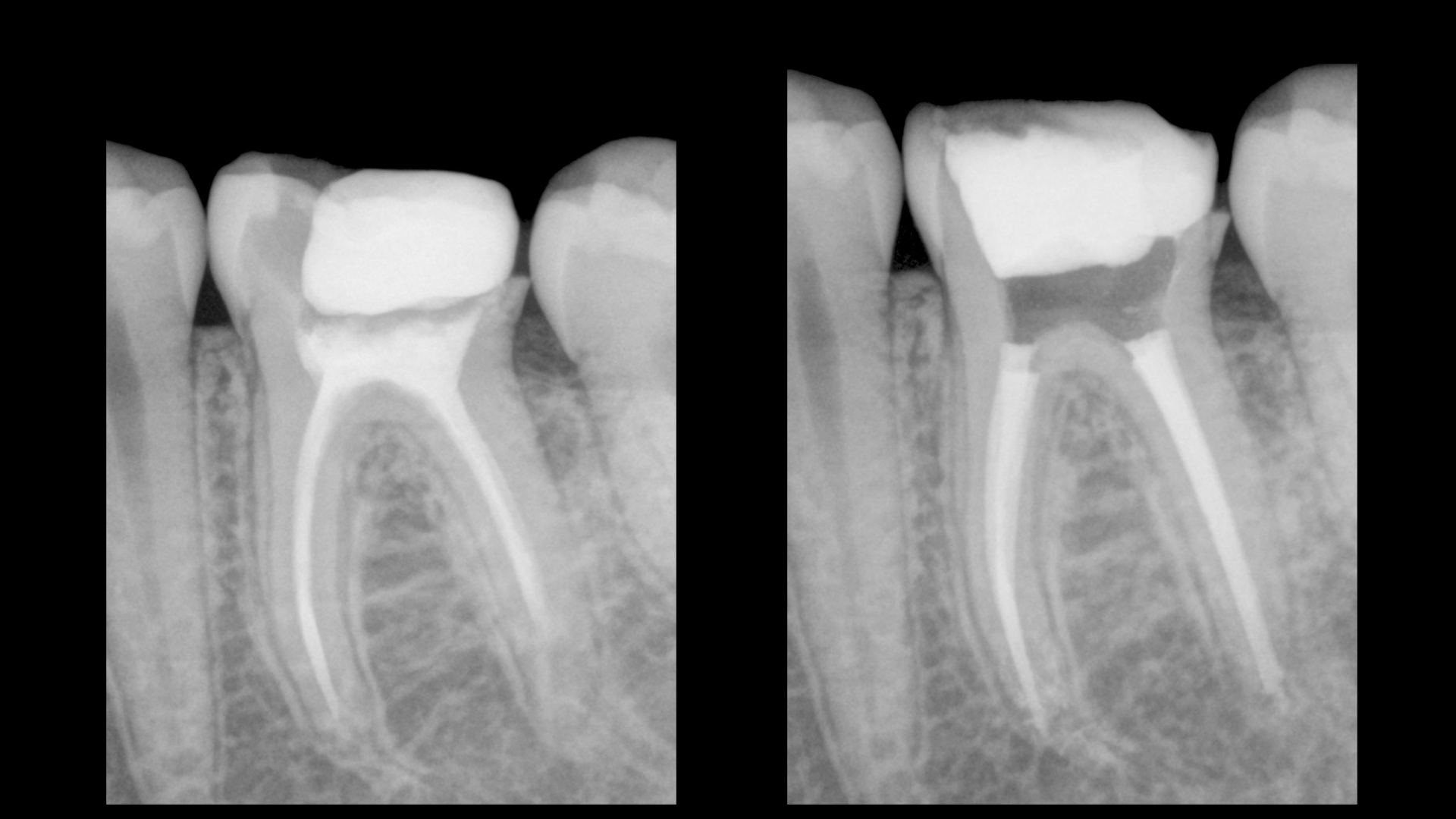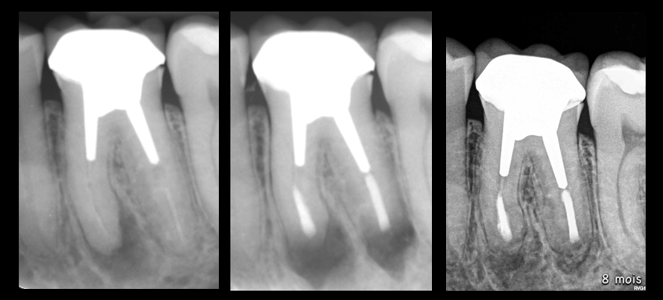Treatments
The goal of these 3 treatments is the same: to disinfect the endodontics part (inside the tooth) of the root, in order to prevent the appearance of bone pathology at the end of the roots or to allow it to heal if it is already present.
Initial treatment
It consists of cleaning the inside of the canals that has never been treated.
Canal treatment can be performed:
- Either when the pulp is still alive but painful
- Or when the pulp is no longer alive (it is then necrotic)
Retreatment
It consists of cleaning the inside of the canals that have already been treated.
A canal retreatment can be performed:
- Either when the bone area at the end of the roots presents pathology (painful or not)
- or when a prosthetic project is planned: like building a house, reconstructing a tooth requires correctly executed foundations.
Endodontic microsurgery
It involves cleaning a root canal that has already been treated: by passing not through the "top of the tooth" (like initial treatments and retreatments) but by going directly to the end of the roots.
Endodontic microsurgery can be performed :
- Either when a properly fitted prosthetic crown and root anchorage are present. Microsurgery resolves the infectious/inflammatory problem without having to remove the prosthesis.
- Or when treatment or retreatment has already been performed but the problem persists: the tooth requires additional disinfection, which is made possible by endodontic microsurgery.



